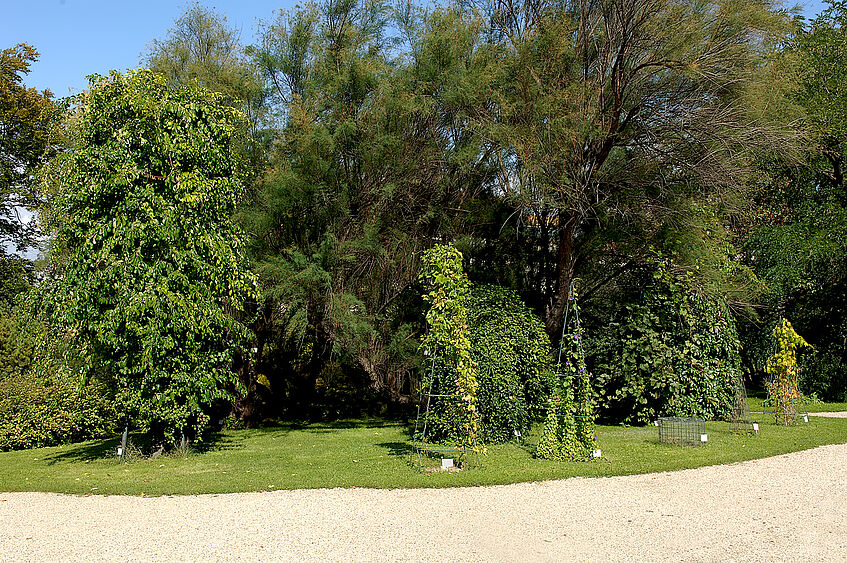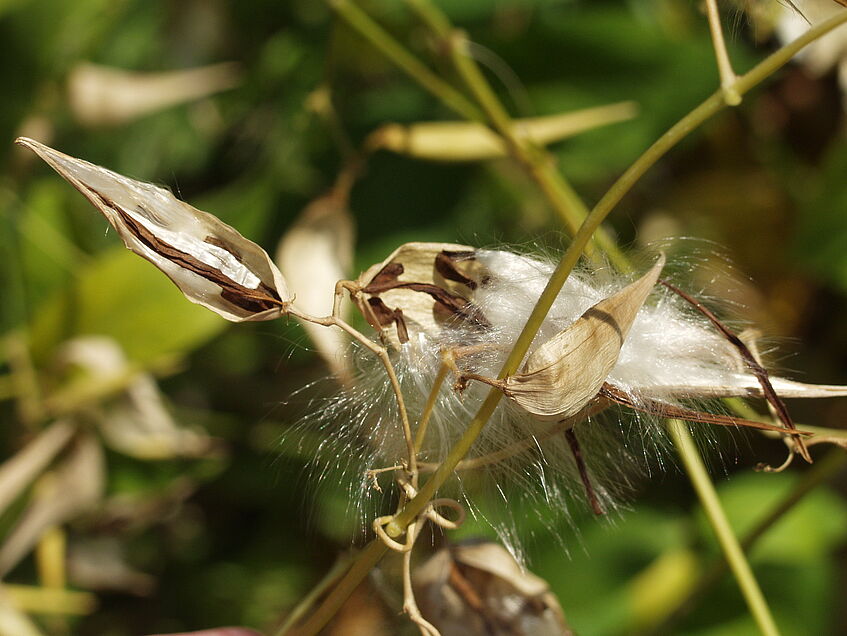Flower biology, fruit biology, and morphology

Flower and fruit biology, and plant morphology display © BGUW_R. Hromniak

Cercis siliquastrum © R. Chizzola

Vincetoxicum nigrum © R. Chizzola

Cobaea scandens © R. Chizzola
The floral biology display demonstrates the diversity of flower structures and their adaptation to various pollinators (e.g. birds, bees, beetles or even wind). In the fruit biology collection we display different mechanisms of seed and fruit dispersal (such as exploding, adhesive, catapulting, or gliding fruits).
The three fundamental organs of a plant (root, stem, and leaf) are the focus of the morphological collection. Here, deviations from the typical appearance of these basic organs are presented: innovations such as flattened stems from plants in dry areas, that carry out photosynthesis instead of the (very small) leaves, or stems that have become twining. The aim is to foster understanding of the plasticity of structural designs in plants as adaptations to different environmental conditions.
